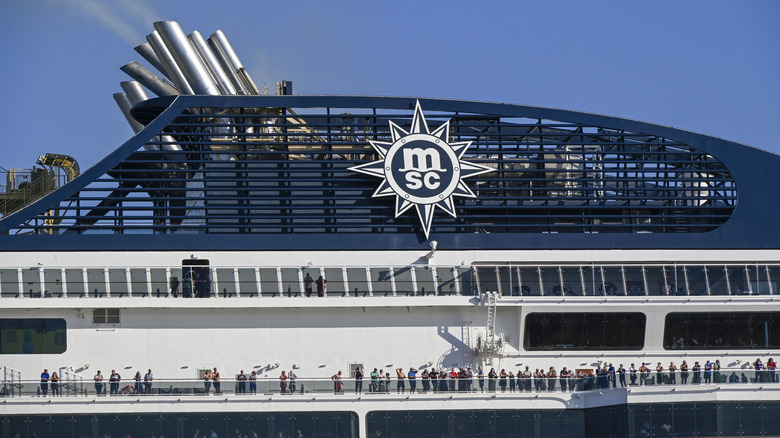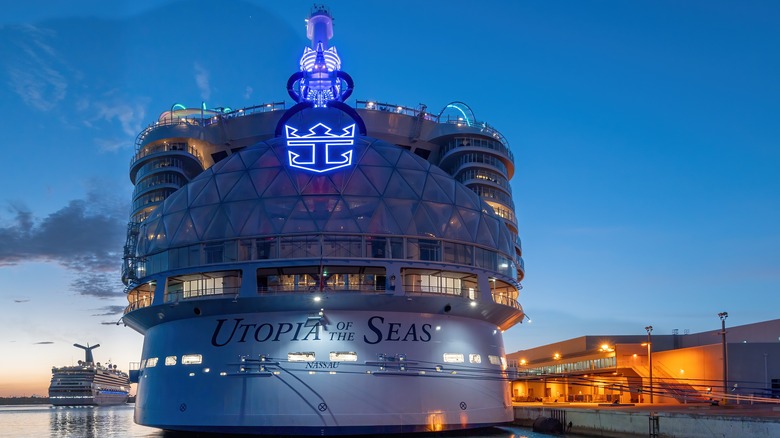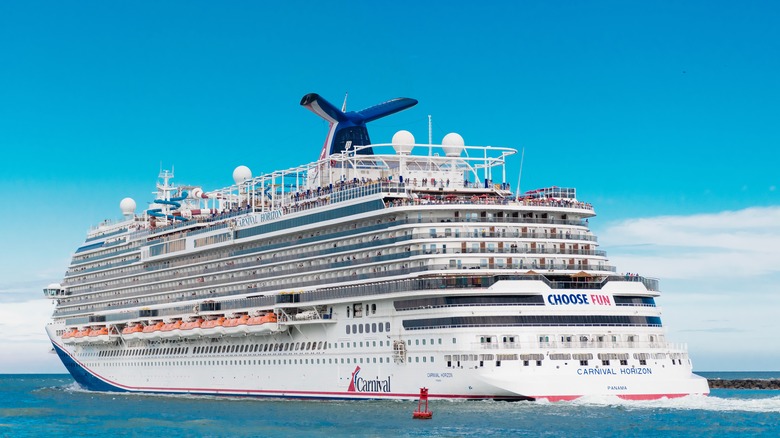What Happens To All The Poop On A Cruise Ship?
The largest cruise ship built to date, the Icon of the Seas, has 2,805 staterooms. Needless to say, there are important amenities like toilets in those rooms, with further restrooms also being strategically spread across the shared areas. As so many plumbers know, managing the contents of just a couple of toilets in the average home can be quite the challenging job at times, but managing thousands of toilets on a vast cruise ship, potentially larger than an aircraft carrier? Now that's where things get messy.
On a cruise ship, poop water is known by the slightly more sophisticated term black water, and, as some may fear, it isn't simply released into the ocean as-is. Not typically, anyway. Given the advanced technology of today's multi-million-dollar vessels, it's no surprise that the flushing of a cruise ship toilet marks the start of a wild decontaminating ride for the human waste in question.
Cruise ships are also home to rooms that treat and make such water fit for being released in this way. The rooms are secreted away like all those cruise ship rubber ducks, and the waste arrives here after travelers flush. The job is accomplished through a multi-stage process of filtration, decomposition, and sterilization. Ultraviolet treatment of the water and incineration of the more "solid" aspects of the sewage round off the process. In this way, the water that can be made 'clean' is released back into the ocean. The issue is, there are limitations to the rules that ship operators must abide by, when it comes to where they can unleash all this water and the condition it must be in when they do so.
How poops are regulated on cruise ships
The International Convention for the Prevention of Pollution from Ships was first introduced in 1973. It has been amended several times over the decades, as the need for new guidelines has been recognized. This protocol covers such matters as the need for oil tankers to have reinforced hulls, to attempt to prevent potentially disastrous spills and leaks. In the matter of cruise ship toilets and sewage management, September 2003's Annex IV Prevention of Pollution by Sewage from Ships is the key element.
It reads, per the International Maritime Organization, "the discharge of sewage into the sea is prohibited, except when the ship has in operation an approved sewage treatment plant or when the ship is discharging comminuted and disinfected sewage using an approved system." What this means is that cruise ship poop is generally processed thoroughly, in a system similar to those found on land, before being released into the ocean.
There are further restrictions that determine when and where this can be done. The very same annex states that a ship must be twelve nautical miles from land if releasing any sewage that hasn't been treated in this fashion, down to a three-mile distance if it has. The significant loophole here, though, means that not all such sewage will necessarily be sanitized in this extensive fashion. These vessels also express wastewater of other sorts (from showers for example) that wouldn't necessarily warrant it, but fastidiousness with sewage is key.
The secret workings of a cruise ship toilet
One thing that typically surprises unprepared first-time cruisers is the noisy suction of the toilets on flushing. They're vacuum-powered like those in aircraft, but the difference is that an aircraft toilet leads to a storage tank that is then emptied at the airport on landing. Cruise ships, embarking on far longer journeys than the typical airliner and generally holding many times more people, manage their own waste on board. The way in which they do that is one aspect of the debate surrounding such immense ships' impact on the environment.
For cruise ships and their operators, the matter of waste and its responsible disposal is one of paramount importance. According to Friends of the Earth, approximately 30% of the food on a cruise ship isn't eaten and must be disposed of. A range of recycling initiatives have been adopted over the decades to help address this, with MSC boasting that its very ships themselves are recycled when they become obsolete. Similarly, cruise operators are eager to express how far their treatment facilities have come. In January 2024, the Miami New Times quoted a Royal Caribbean statement as noting that its fleet — and Royal Caribbean operates a lot of ships — uses "a five-step tertiary system, which far exceeds most land-based treatment plants" in purifying its waste.


